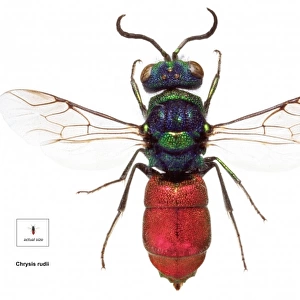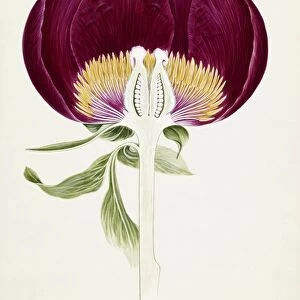Home > Historic > Famous inventors and scientists > Robert Hooke
Flea illustration
![]()

Wall Art and Photo Gifts from Mary Evans Picture Library
Flea illustration
Page 201 from Micrographia or some Physiological description of minute bodies made by magnifying glasses (1665) by Robert Hooke
Mary Evans Picture Library makes available wonderful images created for people to enjoy over the centuries
Media ID 8580375
© Mary Evans Picture Library 2015 - https://copyrighthub.org/s0/hub1/creation/maryevans/MaryEvansPictureID/10708140
Arthropod Arthropoda Flea Hexapod Hexapoda Hooke Insecta Magnified Magnifying Robert Hooke Siphonaptera Invertebrata
FEATURES IN THESE COLLECTIONS
> Animals
> Insects
> Fleas
> Related Images
> Historic
> Famous inventors and scientists
> Robert Hooke
EDITORS COMMENTS
1. Title: A Magnified View of a Flea: An Intriguing Illustration from Robert Hooke's "Micrographia" (1665) Robert Hooke's groundbreaking work, "Micrographia," published in 1665, showcased the wonders of the microscopic world through exquisite illustrations. Among these, Page 201 features a detailed drawing of a flea (Siphonaptera), an invertebrate animal from the class Insecta, order Siphonaptera, and subclass Hexapoda. This illustration offers a magnified view of the flea's intricate structure, revealing its hexapod nature and the complex details of its six legs. The flea, a tiny yet notorious creature, is an arthropod belonging to the class Arthropoda. Its hexapod body structure, characterized by six legs, is a common trait among insects and other arthropods. In this illustration, Hooke meticulously depicts the flea's elongated body, segmented legs, and the distinct features of its three body segments: the head, thorax, and abdomen. The flea's head is illustrated with its large compound eyes, antennae, and mouthparts. The thorax, the middle segment, is shown with three pairs of legs, each leg composed of seven segments: coxa, trochanter, femur, tibia, tarsus, and pretarsus. The abdomen, the posterior segment, is depicted with its various segments and the distinctive jumping organs, or "siphons," which give the flea its name (Siphonaptera). This illustration is a testament to Hooke's remarkable skill as an observer and draftsman, as well as his innovative use of the microscope to reveal the hidden world of minute bodies. The flea, once a seemingly insignificant creature, is transformed into a fascinating subject of scientific inquiry and artistic expression. This image continues to inspire curiosity and wonder, reminding us of the endless possibilities that lie within the microscopic realm.
MADE IN AUSTRALIA
Safe Shipping with 30 Day Money Back Guarantee
FREE PERSONALISATION*
We are proud to offer a range of customisation features including Personalised Captions, Color Filters and Picture Zoom Tools
SECURE PAYMENTS
We happily accept a wide range of payment options so you can pay for the things you need in the way that is most convenient for you
* Options may vary by product and licensing agreement. Zoomed Pictures can be adjusted in the Cart.













